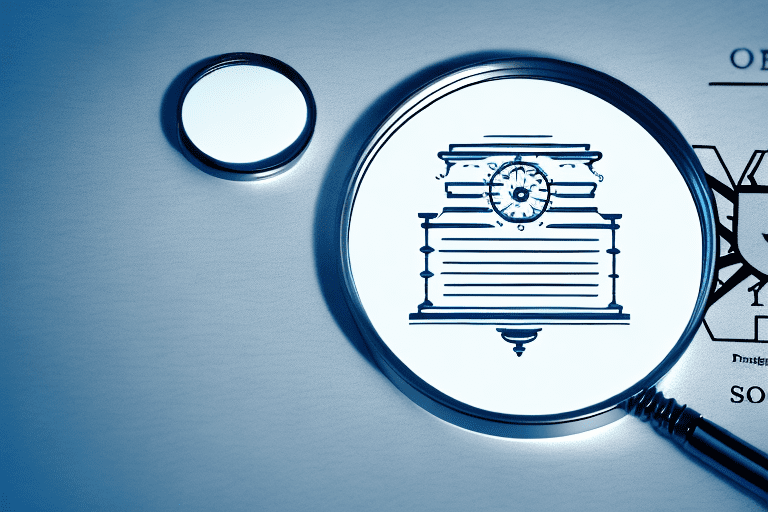In the world of innovation and intellectual property, patents play a crucial role. They provide legal protection for inventors, ensuring that their ideas and inventions remain exclusive and granting them the right to prohibit others from using, selling, or manufacturing their creations without permission. Understanding the concept of patents, the process of obtaining one, and the role of the Manual of Patent Examining Procedure (MPEP) can be quite intricate. Additionally, individuals interested in pursuing a career in patent law often have to pass the Patent Bar Exam. This article aims to delve into the nuances of prioritized examination, exploring patents, the MPEP, and the Patent Bar.
Understanding the Concept of a Patent
In order to comprehend the relevance and significance of patents, it is essential to begin with an exploration of their origins and purpose. The history of patents can be traced back centuries, stemming from a desire to encourage and reward inventiveness. Dating back to the Roman Empire, these legal mechanisms have evolved significantly over time to accommodate the ever-changing landscape of technology, science, and industry. Patents not only protect inventors’ intellectual property but also promote innovation and investment, contributing to economic growth and technological advancement. Without patents, the inventors would be hesitant to disclose their creations, fearing that their ideas would be stolen or replicated without their consent.
The Importance of Patents in Innovation
It is undeniable that patents play a pivotal role in fostering innovation. By granting inventors exclusive rights to their creations, patents encourage the sharing of knowledge and the dissemination of ideas. This creates a conducive environment for collaboration and the development of cutting-edge technologies. Inventors are reassured that their efforts will be rewarded, and potential investors can confidently support these innovations, knowing that their investments are protected by a patent. This symbiotic relationship between patents, innovation, and investment fuels progress, driving society forward and revolutionizing industries.
The Process of Obtaining a Patent
Obtaining a patent requires a comprehensive understanding of the patent application process. It involves various complexities and intricate legal requirements that inventors and their legal representatives must navigate. From initial research and documentation to extensive examination and prosecution, the process can be arduous and time-consuming. However, the potential benefits of securing a patent, such as legal protection, market exclusivity, and the ability to monetize the invention, make it a worthwhile endeavor for many inventors.
When an inventor decides to pursue a patent, they embark on a journey that involves careful planning and strategic decision-making. The process typically begins with conducting a thorough search to ensure that the invention is novel and does not infringe on existing patents. This step is crucial as it helps inventors understand the existing landscape and identify any potential obstacles or prior art that may affect the patentability of their invention.
Once the search is complete and the inventor is confident in the uniqueness of their invention, they move on to the next stage, which involves preparing a detailed patent application. This application includes a comprehensive description of the invention, supported by drawings, diagrams, and any other relevant documentation. The application must meet strict legal requirements and adhere to specific formatting guidelines, ensuring that it clearly and accurately conveys the invention to the patent examiner.
After the application is submitted, it undergoes a rigorous examination process by a patent examiner who assesses the patentability of the invention. The examiner reviews the application, conducts a thorough analysis of the prior art, and evaluates whether the invention meets the criteria for patentability, such as novelty, non-obviousness, and utility. This examination phase can be lengthy, with multiple rounds of correspondence between the inventor and the examiner to address any objections or rejections raised during the process.
If the patent examiner determines that the invention meets the necessary requirements, the inventor is granted a patent. This patent provides the inventor with exclusive rights to their invention for a specified period, typically 20 years from the filing date. During this time, the inventor has the power to prevent others from making, using, or selling their invention without their permission. This exclusivity serves as a strong incentive for inventors to disclose their creations to the public, as they can now protect their intellectual property and reap the rewards of their innovation.
Securing a patent not only provides inventors with legal protection but also opens doors for various opportunities. With a patent in hand, inventors can explore licensing agreements, allowing them to generate revenue by granting others the right to use their invention. They can also seek partnerships or collaborations with established companies that can help bring their invention to market. Additionally, having a patent can enhance an inventor’s reputation and credibility, making it easier for them to attract investors or secure funding for further research and development.
In conclusion, patents are a fundamental aspect of the innovation ecosystem. They incentivize inventors to share their ideas, drive collaboration and investment, and ultimately fuel progress. The process of obtaining a patent may be complex and time-consuming, but the potential benefits make it a worthwhile endeavor for inventors seeking to protect their intellectual property and capitalize on their inventions.
An In-depth Look at the Manual of Patent Examining Procedure (MPEP)
Within the realm of patent law, the Manual of Patent Examining Procedure (MPEP) serves as a critical resource for both examiners and applicants. The MPEP is a comprehensive guidebook that outlines the rules, procedures, and guidelines that govern the examination of patent applications. Its primary purpose is to ensure uniformity and consistency in the examination process, providing clarity and transparency for all parties involved.
The Role of the MPEP in Patent Law
The MPEP plays a pivotal role in patent law, serving as a reference document for patent examiners and attorneys alike. It helps examiners evaluate the patentability of an invention by providing a framework for conducting prior art searches, assessing novelty and non-obviousness, and applying the relevant legal principles. Likewise, applicants and their legal representatives refer to the MPEP to understand the expectations and requirements for successful patent prosecutions.
Key Sections of the MPEP
Among the numerous sections of the MPEP, several warrant special attention due to their significance in the examination process. These include guidelines on patent eligibility, the examination of claims, the determination of novelty and obviousness, as well as guidance on patentable subject matter and the enablement requirement. Familiarizing oneself with these sections is crucial for inventors and their legal representatives, as it gives them insights into the specific aspects inspectors review, enabling them to enhance their patent applications accordingly.
Patent Eligibility Guidelines
One of the key sections of the MPEP is dedicated to patent eligibility guidelines. This section provides examiners with a framework for determining whether an invention meets the statutory requirements for patentability. It outlines the criteria for subject matter eligibility, addressing issues such as abstract ideas, laws of nature, and natural phenomena. By referring to this section, examiners can ensure that only inventions meeting the established criteria are granted patents.
Examination of Claims
Another important section of the MPEP focuses on the examination of claims. Claims are the heart of a patent application, defining the scope of protection sought by the applicant. The MPEP provides guidelines on how examiners should analyze claims, including determining their clarity, support, and whether they are adequately described. This section also addresses issues such as claim amendments and claim interpretation, ensuring consistency in the examination process.
Determination of Novelty and Obviousness
The MPEP dedicates significant attention to the determination of novelty and obviousness. These two criteria are crucial in evaluating the patentability of an invention. The MPEP provides examiners with a framework for conducting prior art searches and assessing whether an invention is new and non-obvious. It outlines the factors to consider when determining obviousness, such as the level of ordinary skill in the art and the scope and content of prior art references.
How to Navigate the MPEP
Navigating the MPEP can be daunting, given its extensive content and complex legal jargon. However, several strategies can facilitate efficient navigation. Understanding the structure of the MPEP is key, as it is organized into chapters, subchapters, and sections, each addressing specific topics. Utilizing search functions within the electronic version of the MPEP can help locate relevant information quickly. Additionally, bookmarking frequently referenced sections can save time during future consultations.
Seeking Guidance from Experienced Patent Professionals
While the MPEP provides valuable guidance, seeking advice from experienced patent professionals can further enhance comprehension and utilization of the MPEP. These professionals have extensive knowledge and practical experience in dealing with patent applications and can provide insights and strategies specific to individual cases. Additionally, participating in specialized training programs or workshops focused on the MPEP can help individuals gain a deeper understanding of its content and applications.
Conclusion
In conclusion, the Manual of Patent Examining Procedure (MPEP) is an indispensable resource for both patent examiners and applicants. Its comprehensive guidelines and procedures ensure uniformity and consistency in the examination process, providing clarity and transparency for all parties involved. By familiarizing themselves with the key sections of the MPEP and utilizing effective navigation strategies, inventors and their legal representatives can enhance their patent applications and increase their chances of success.
The Significance of Prioritized Examination in Patent Law
Prioritized examination is a unique process in patent law that allows applicants to expedite the examination of their patent applications. This alternative to traditional examination offers distinct advantages and disadvantages that inventors should carefully consider when deciding on the most appropriate examination route for their inventions.
The Basics of Prioritized Examination
Prioritized examination, also known as “Track I,” allows applicants to accelerate the examination process, reducing the waiting time between filing an application and receiving a decision from the Patent and Trademark Office (USPTO). Through prioritized examination, inventors can significantly expedite the granting (or denial) of their patent, thus gaining quicker access to the exclusive rights afforded to them.
The Benefits of Prioritized Examination
One of the primary advantages of prioritized examination is the accelerated processing time. Applicants who opt for prioritized examination can expect a decision on their patent application within approximately 12 months, compared to the several years typically required for traditional examination. This expedited process can be particularly advantageous in rapidly evolving industries or instances where market exigencies necessitate prompt patent protection.
The Drawbacks of Prioritized Examination
While prioritized examination offers notable benefits, it is important to consider the potential drawbacks that accompany this expedited process. The cost of prioritized examination is significantly higher than that of traditional examination, making it less accessible for inventors with limited resources. Additionally, the greater speed of prioritized examination comes with a trade-off in terms of the limited number of applications that can be granted prioritized status each fiscal year. This cap can result in delays for some applicants, particularly during periods of high demand.
Preparing for the Patent Bar Exam
The Patent Bar Exam is a crucial milestone for individuals seeking to become registered patent practitioners. This comprehensive exam assesses an individual’s knowledge and understanding of patent law, including the MPEP’s intricacies.
Understanding the Format of the Patent Bar Exam
The Patent Bar Exam comprises multiple-choice questions that evaluate an individual’s grasp of various topics, including patentability, patent prosecution, and post-grant proceedings. It is essential for aspiring patent professionals to familiarize themselves with the structure, content, and time constraints of the exam to facilitate effective preparation.
Essential Study Tips for the Patent Bar Exam
Preparing for the Patent Bar Exam requires careful planning and diligent study. Developing a structured study schedule, utilizing reputable study materials, and engaging in regular practice exams are effective strategies for success. Additionally, seeking guidance from experienced patent professionals or joining study groups can provide valuable insights and support during the preparation process.
The Role of the MPEP in the Patent Bar Exam
Given the MPEP’s significance in patent law, it naturally plays a pivotal role in the Patent Bar Exam. Aspiring patent professionals should thoroughly review relevant sections of the MPEP and familiarize themselves with the manual’s structure and content to effectively answer the exam’s questions related to patent examination procedures.
In conclusion, prioritized examination is a unique path for inventors seeking patent protection, offering a faster route to exclusive rights. The MPEP serves as a critical resource throughout the patent application and examination process, ensuring uniformity and consistency. Lastly, the Patent Bar Exam represents a significant milestone for individuals aspiring to become registered patent practitioners, necessitating extensive knowledge of patent law. By exploring these crucial aspects of patent law, inventors and aspiring patent professionals can navigate the complexities of patents, the MPEP, and the Patent Bar with greater confidence and understanding.






